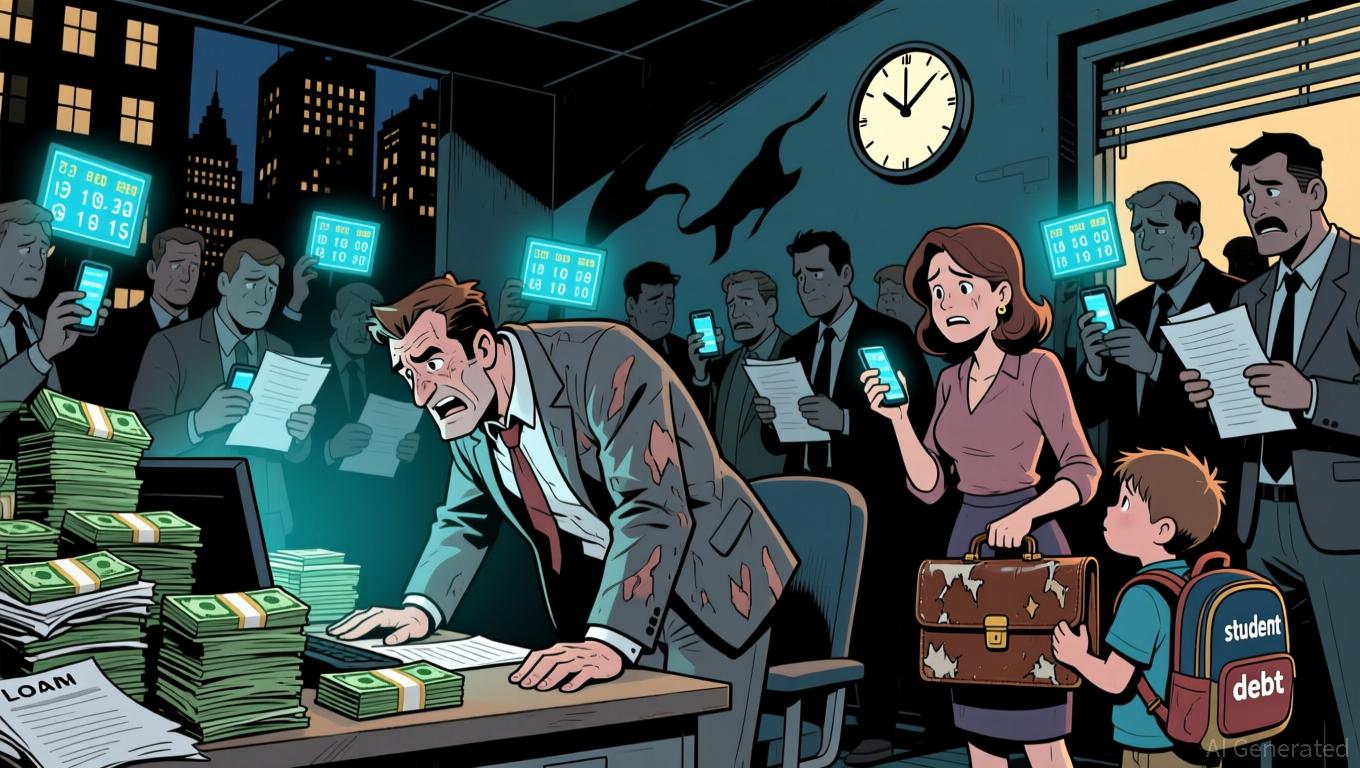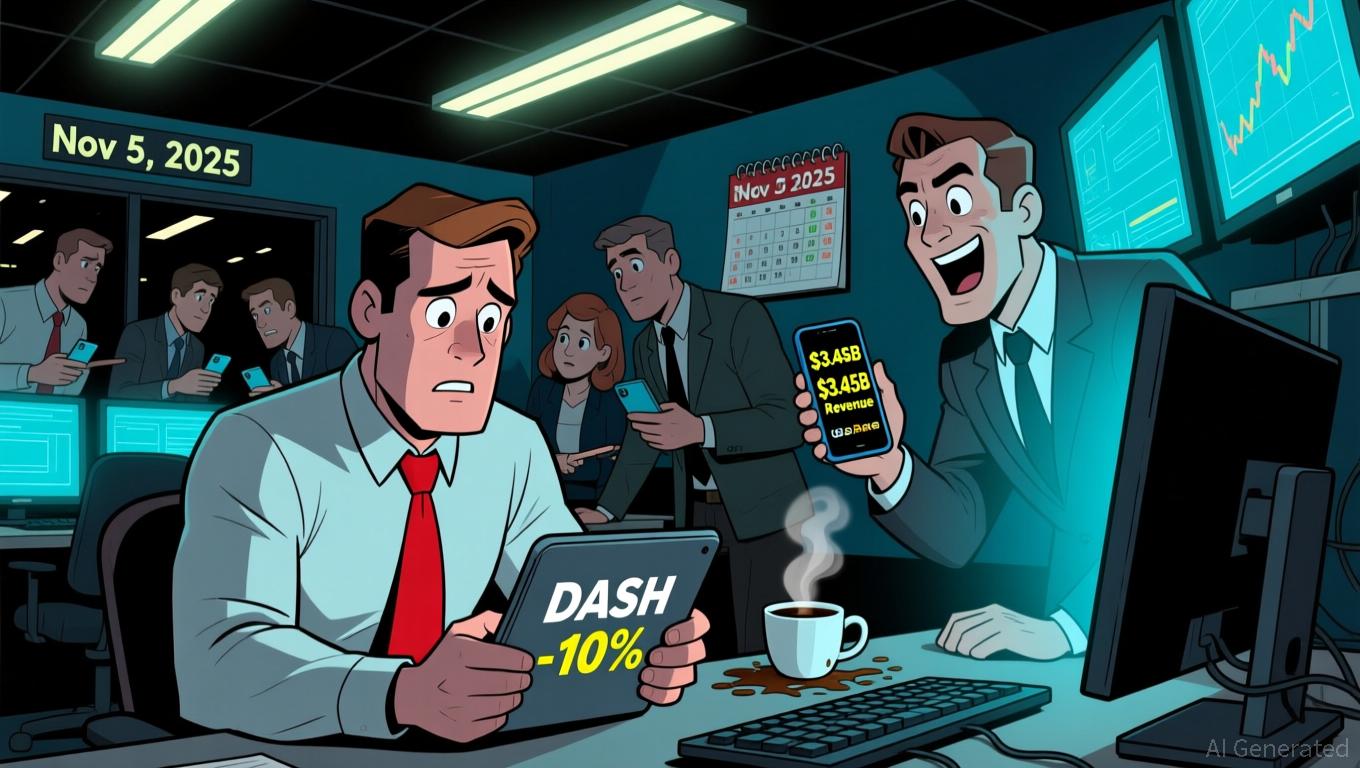Fed Faces a Choice: Boost Growth or Curb Mounting Debt?
- U.S. household debt hit $18.59 trillion in Q3 2025, driven by rising credit card, student loan, and home equity debt with delinquency rates at multi-year highs. - The Fed initiated rate cuts amid slowing job growth but faces a dilemma: easing economic strain risks inflating a consumer debt bubble while tightening worsens defaults. - Retailers, banks, and auto lenders face fallout as discretionary spending declines and loan defaults rise, while essential goods and debt collectors see increased demand. - P
As of the third quarter of 2025, American families are shouldering a record-breaking $18.59 trillion in debt, marking a $197 billion increase from the previous quarter, according to

The Federal Reserve’s recent shift toward lowering rates, with a projected total reduction of 75 basis points in 2025, signals its growing concern about the economic strain from rising debt, the report continues. Still, experts caution that reducing rates may not significantly ease the pressure from existing high-interest obligations. “The Fed is in a precarious position,” one economist commented, explaining that while rate cuts could encourage more borrowing for homes and businesses, they also risk further inflating the consumer debt bubble, according to the analysis.
This surge in debt is prompting companies—especially in retail, finance, and automotive industries—to rethink their strategies. Retailers selling non-essential goods, such as luxury brands and travel services, are seeing demand drop as families focus on necessities, the FinancialContent article notes. Meanwhile, traditional banks and credit card companies are preparing for a rise in loan defaults.
On the other hand, retailers specializing in essentials like Walmart and Costco continue to see steady demand, and companies in healthcare and utilities remain largely unaffected by shifts in consumer spending. Debt collection firms and lenders with varied sources of income are also profiting from the uptick in delinquencies.
The Federal Reserve’s predicament reflects wider global patterns. While mortgage loans remain relatively healthy due to strong home equity, the increase in non-mortgage delinquencies points to an uneven recovery. The central bank’s Financial Stability Report identifies high business debt and rising consumer loan defaults as major systemic threats, leading to calls for more targeted policy responses, the report says.
Looking forward, forecasts suggest the U.S. economy will expand by just 1.7% in 2025 and 1.4% in 2026, with inflation rates averaging 2.9% and 3.2% respectively, according to the analysis. The Fed’s anticipated rate cuts, expected to lower the federal funds rate to between 3.50% and 3.75% by late 2026, are intended to support a weakening job market while keeping inflation in check. However, ongoing tariffs and policy uncertainties could complicate these efforts.
The Federal Reserve’s upcoming decisions will depend on critical economic data. Reports on manufacturing and retail sales, due in early November, may influence future rate changes, according to the
With the debt crisis worsening, investors are watching delinquency rates and Fed policy closely. The next few months will be a test of the central bank’s ability to steer the economy through these challenges without triggering a wider financial downturn, the FinancialContent report concludes.
Disclaimer: The content of this article solely reflects the author's opinion and does not represent the platform in any capacity. This article is not intended to serve as a reference for making investment decisions.
You may also like
XRP News Today: Mastercard’s Blockchain Initiative: Regulated Networks Set to Transform International Payments
- Mastercard explores $1.5B-$2B acquisition of MiCAR-licensed crypto infrastructure firm Zerohash to expand Web3 capabilities. - Partners with Ripple to pilot RLUSD stablecoin for credit card settlements on XRP Ledger, enabling instant cross-border transactions. - Zerohash's regulatory compliance and $1B valuation align with Mastercard's strategy to bridge traditional finance and blockchain infrastructure. - RLUSD's NYDFS-backed growth and XRP Ledger integration could reshape global payments while reinforc
DoorDash Shares Drop 10% as Focus on Growth Reinvestment Outweighs Earnings Outperformance
- DoorDash's stock fell over 10% post-earnings despite $3.45B revenue beat, driven by 25% GOV growth and 21% order increase. - Management signaled $300M+ 2026 AI/tool investments and revised Deliveroo's EBITDA contribution down by $32-40M due to accounting changes. - Analysts cut price targets (Wells Fargo to $239) as $754M adjusted EBITDA (up 41%) was overshadowed by reinvestment concerns despite $723M free cash flow. - 42% YTD gains amplified sell-off sensitivity, with 31 analysts retaining "Moderate Buy

Savers Confront a Choice: Lock in Safe 5% Returns or Chase DeFi's Tempting 12%
- Fed rate cuts in 2025 spurred high-yield savings accounts offering up to 5.00% APY, outpacing traditional banks' 0.40% average. - DeFi platforms like ZEROBASE and Maple Finance offer 12-7% APY on stablecoins, but require higher risk tolerance and short liquidity periods. - Banks may reduce APYs if further Fed cuts occur, while FDIC-insured high-yield accounts remain popular for inflation protection. - Alternative assets like Bitcoin and dividend stocks (e.g., Viper Energy's 3.49% yield) show growing comp

Bitcoin News Update: Institutions Remain Wary as Retail Investors Drive Crypto Innovation—The Battle for Dominance Escalates
- Bitcoin fluctuates near $110,000 amid ETF outflows and revised institutional price targets, with long-term holders creating resistance through strategic BTC distributions. - Ethereum and XRP show resilience with ETF inflows and whale activity, while emerging projects like Remittix ($27.8M raised) and Noomez gain traction through innovative tokenomics. - Analysts remain divided: some see $120,000 potential if Bitcoin breaks key averages, while others warn of $72,000 corrections amid macroeconomic uncertai
